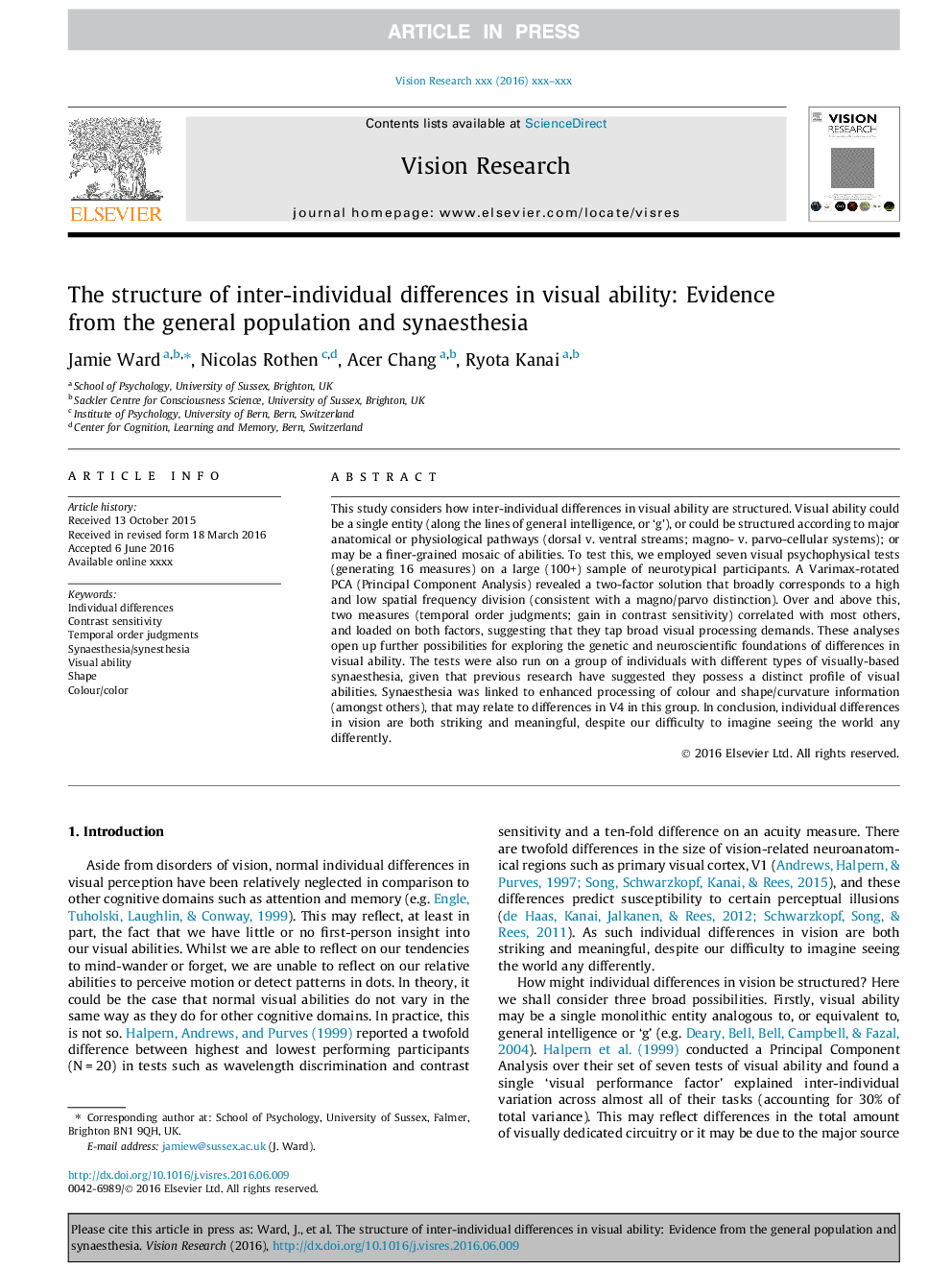| Article ID | Journal | Published Year | Pages | File Type |
|---|---|---|---|---|
| 8795369 | Vision Research | 2017 | 10 Pages |
Abstract
This study considers how inter-individual differences in visual ability are structured. Visual ability could be a single entity (along the lines of general intelligence, or 'g'), or could be structured according to major anatomical or physiological pathways (dorsal v. ventral streams; magno- v. parvo-cellular systems); or may be a finer-grained mosaic of abilities. To test this, we employed seven visual psychophysical tests (generating 16 measures) on a large (100+) sample of neurotypical participants. A Varimax-rotated PCA (Principal Component Analysis) revealed a two-factor solution that broadly corresponds to a high and low spatial frequency division (consistent with a magno/parvo distinction). Over and above this, two measures (temporal order judgments; gain in contrast sensitivity) correlated with most others, and loaded on both factors, suggesting that they tap broad visual processing demands. These analyses open up further possibilities for exploring the genetic and neuroscientific foundations of differences in visual ability. The tests were also run on a group of individuals with different types of visually-based synaesthesia, given that previous research have suggested they possess a distinct profile of visual abilities. Synaesthesia was linked to enhanced processing of colour and shape/curvature information (amongst others), that may relate to differences in V4 in this group. In conclusion, individual differences in vision are both striking and meaningful, despite our difficulty to imagine seeing the world any differently.
Keywords
Related Topics
Life Sciences
Neuroscience
Sensory Systems
Authors
Jamie Ward, Nicolas Rothen, Acer Chang, Ryota Kanai,
